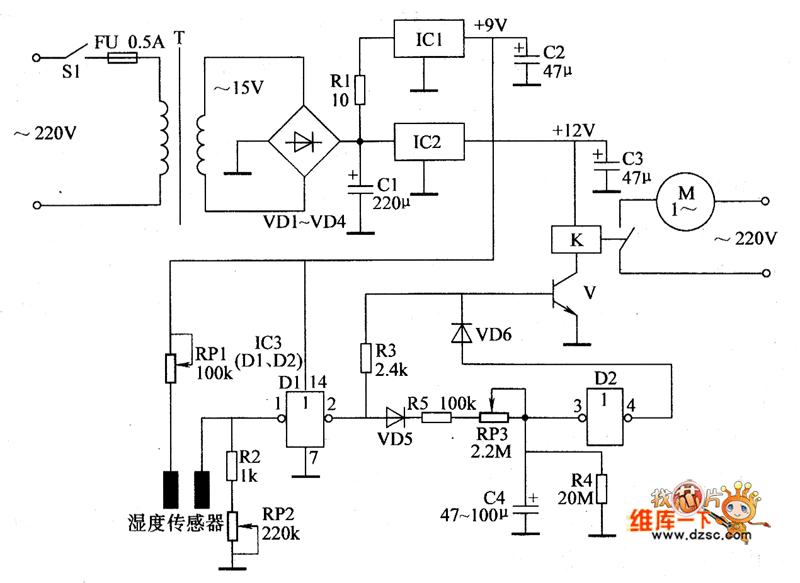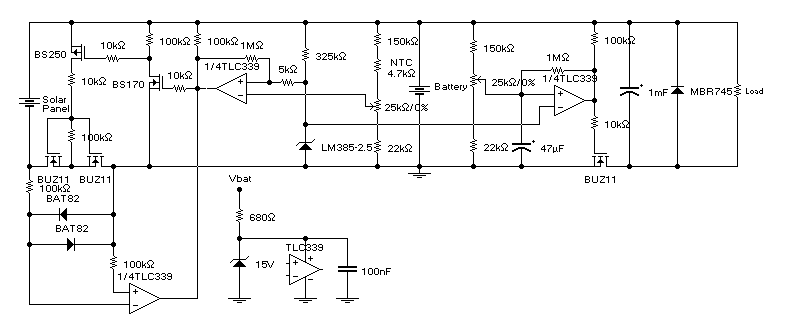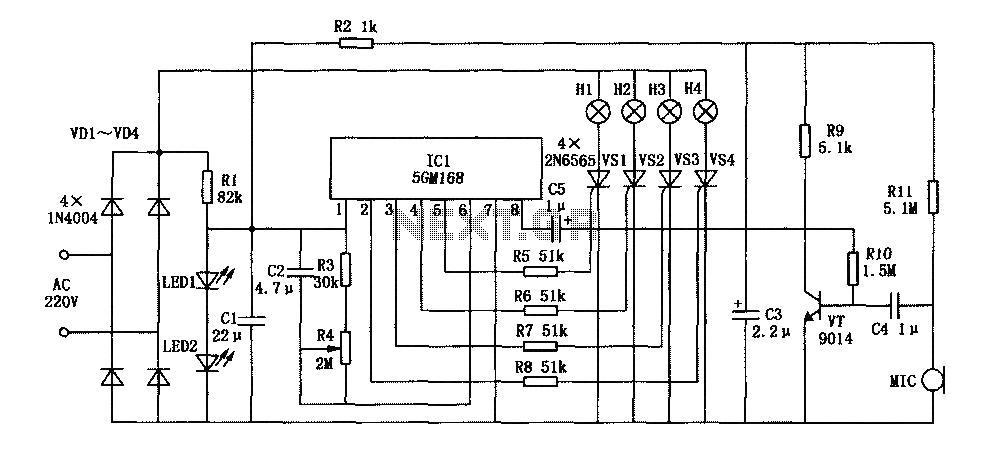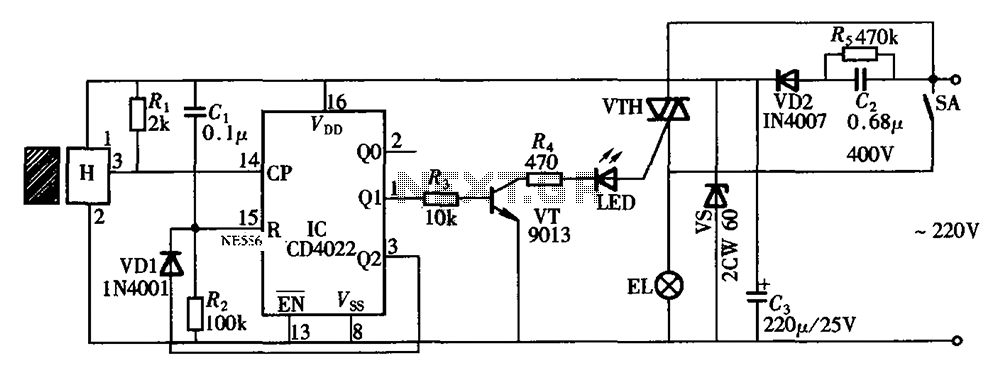
Automatic Solar Garden Lights with LEDs

Efficient automatic solar garden lights circuit with minimal components. The advantage is that it operates completely automatically, with the solar panel serving as a light detector.
The efficient automatic solar garden lights circuit is designed to provide illumination using renewable energy, minimizing the need for manual intervention. This circuit typically consists of a solar panel, a rechargeable battery, an LED light source, and a light-dependent resistor (LDR) or a phototransistor that functions as a light detector.
During the day, the solar panel captures sunlight and converts it into electrical energy, which is used to charge the rechargeable battery. The circuit is designed to ensure that the battery remains charged to power the LED lights during nighttime. The LDR or phototransistor senses ambient light levels; when the sunlight diminishes, the resistance of the LDR increases or the phototransistor switches states, triggering the circuit to turn on the LED lights.
The use of minimal components not only simplifies the design but also reduces manufacturing costs and enhances reliability. The circuit can be implemented using basic electronic components such as resistors, transistors, and diodes, ensuring ease of assembly and maintenance.
Additionally, the circuit can incorporate features such as a timer or a microcontroller for more advanced control options, allowing for adjustable brightness levels or specific operating hours. However, the core functionality relies on the automatic operation governed by the solar panel and the light detection mechanism. This design is particularly suitable for outdoor environments, providing sustainable lighting solutions for gardens, pathways, or other outdoor areas without the need for extensive wiring or external power sources.Efficient automatic solar garder lights circuit with minimum components the best deal is that is completely auto and the Solar panel acts as a light detect. 🔗 External reference
The efficient automatic solar garden lights circuit is designed to provide illumination using renewable energy, minimizing the need for manual intervention. This circuit typically consists of a solar panel, a rechargeable battery, an LED light source, and a light-dependent resistor (LDR) or a phototransistor that functions as a light detector.
During the day, the solar panel captures sunlight and converts it into electrical energy, which is used to charge the rechargeable battery. The circuit is designed to ensure that the battery remains charged to power the LED lights during nighttime. The LDR or phototransistor senses ambient light levels; when the sunlight diminishes, the resistance of the LDR increases or the phototransistor switches states, triggering the circuit to turn on the LED lights.
The use of minimal components not only simplifies the design but also reduces manufacturing costs and enhances reliability. The circuit can be implemented using basic electronic components such as resistors, transistors, and diodes, ensuring ease of assembly and maintenance.
Additionally, the circuit can incorporate features such as a timer or a microcontroller for more advanced control options, allowing for adjustable brightness levels or specific operating hours. However, the core functionality relies on the automatic operation governed by the solar panel and the light detection mechanism. This design is particularly suitable for outdoor environments, providing sustainable lighting solutions for gardens, pathways, or other outdoor areas without the need for extensive wiring or external power sources.Efficient automatic solar garder lights circuit with minimum components the best deal is that is completely auto and the Solar panel acts as a light detect. 🔗 External reference





